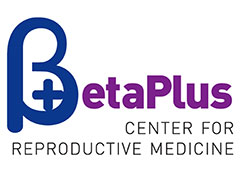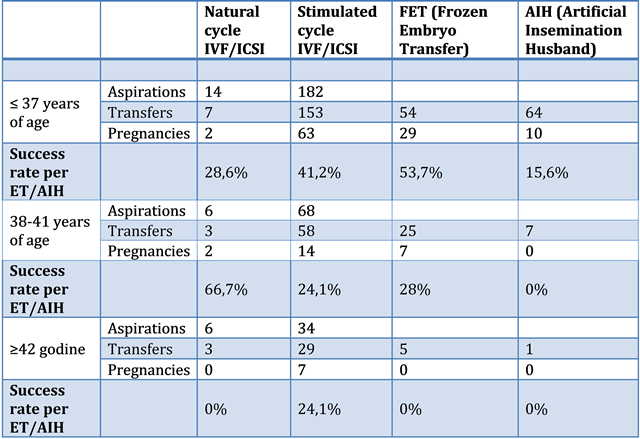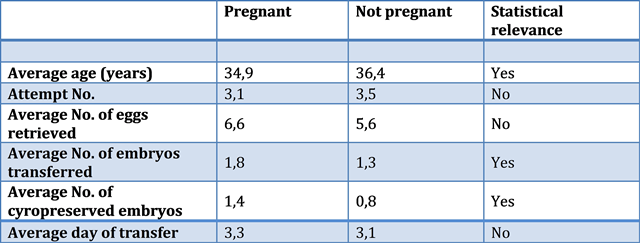The following table shows the overall ART success rates in BetaPlus Center in 2015.
In 61 patients (out of a total of 314 aspirations) embryo transfer was not performed, due to the following reasons:
– no eggs were retrieved during follicle aspiration in 16 women (5.1%),
– no fertilization occurred in 27 patients (8.6%),
– embryos stopped developing in 9 patients (2.9%),
– one patient had egg cryopreservation on two occasions
– “freeze all embryos” strategy was employed in 8 patients, mostly due to danger of developing an ovarian hyperstimulation syndrome,
The youngest patient to become pregnant in the stimulated cycle was 34, and the oldest was 44. There were 4 twin pregnancies in stimulated cycles. There were no ectopic pregnancies and one patient developed moderate ovarian hyperstimulation syndrome. There were 29 biochemical pregnancies and miscarriages.
There were nine patients with no eggs retrieved. Eight of them had very low ovarian reserve, and one probably had issues related to hCG injection.
In the table below, we show an overview of predictors of ART cycles success rates.
ARTIFICIAL INSEMINATION HUSBAND (AIH)
Aa total of 72 women had AIH. Of 64 women aged 37 or less, 10 women became pregnant (15.6%). Five of those got pregnant in 20 inseminations in natural cycle (25%) and 5 in 44 clomiphene citrate cycles (11.4%). Average age of our patients in the natural cycle was 32 and in the stimulated cycle it was 33.
FROZEN EMBRYO TRANSFER (FET)
Five women who were 42 or older were not pregnant. Four women had blastocyst ET and one had day 3 embryo transfer.
7 pregnancies in 25 women between the age of 38 and 41 were achieved. 23 had blastocyst ET (7/23=30.4%) and two had day 3 embryo transfer (no pregnancies). 17 women had ET of two embryos and 7 had single embryo transfer, but no pregnancies were multiple.
29 pregnancies (53.7%) in 54 women aged 37 or younger were achieved. 27 of them had a single embryo transfer. Three of them had single day 3 embryo transfer (2 pregnancies) and 24 had single blastocyst transfer (12 pregnancies). There were no multiple pregnancies. This makes our success rate per single blastocyst FET 50%.
The remaining 27 women had two embryo transferred Three women had day 3 embryo transfer (one pregnancy) and 24 had two blastocyst transfer. 14 pregnancies (58.3%) were achieved but 5 twin pregnancies (35.7%). This is why we recommend a single blastocyst transfer in women younger than 36, at least in the first two embryo transfers.






